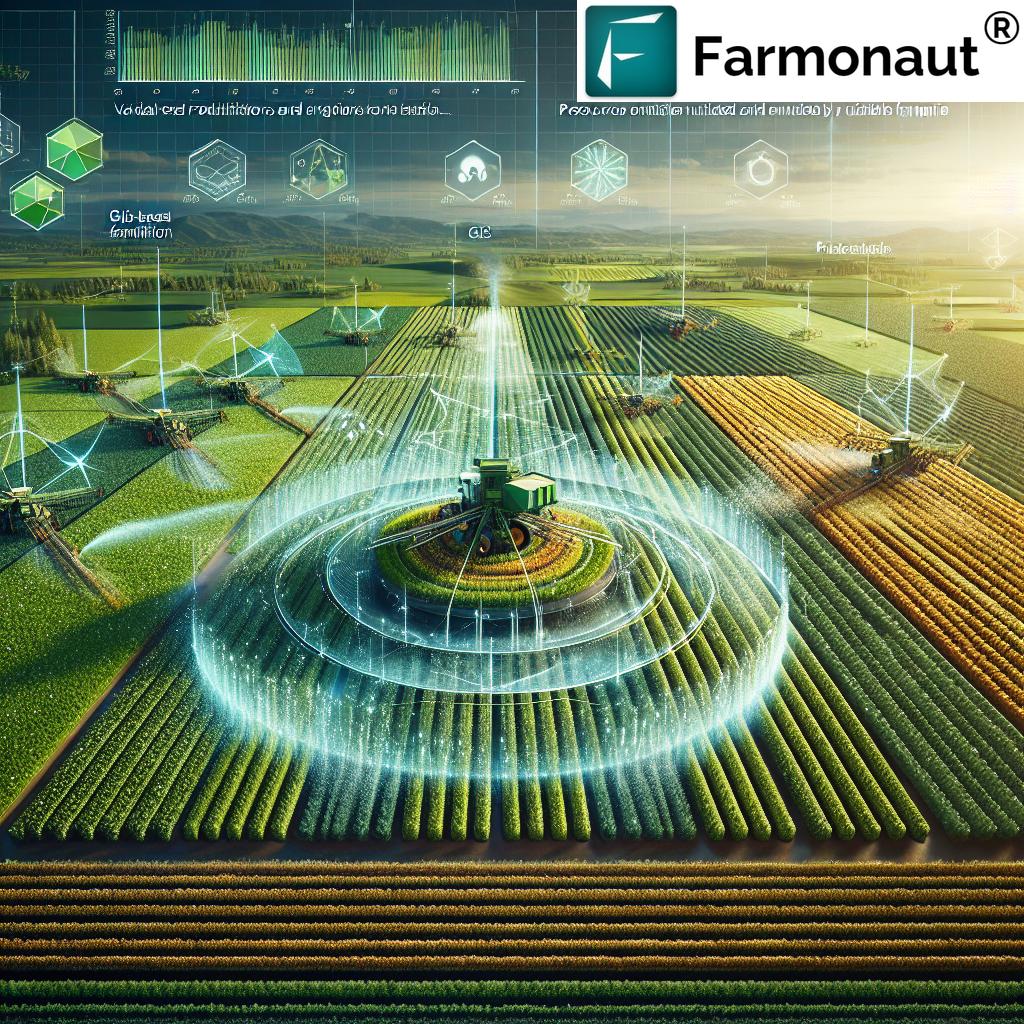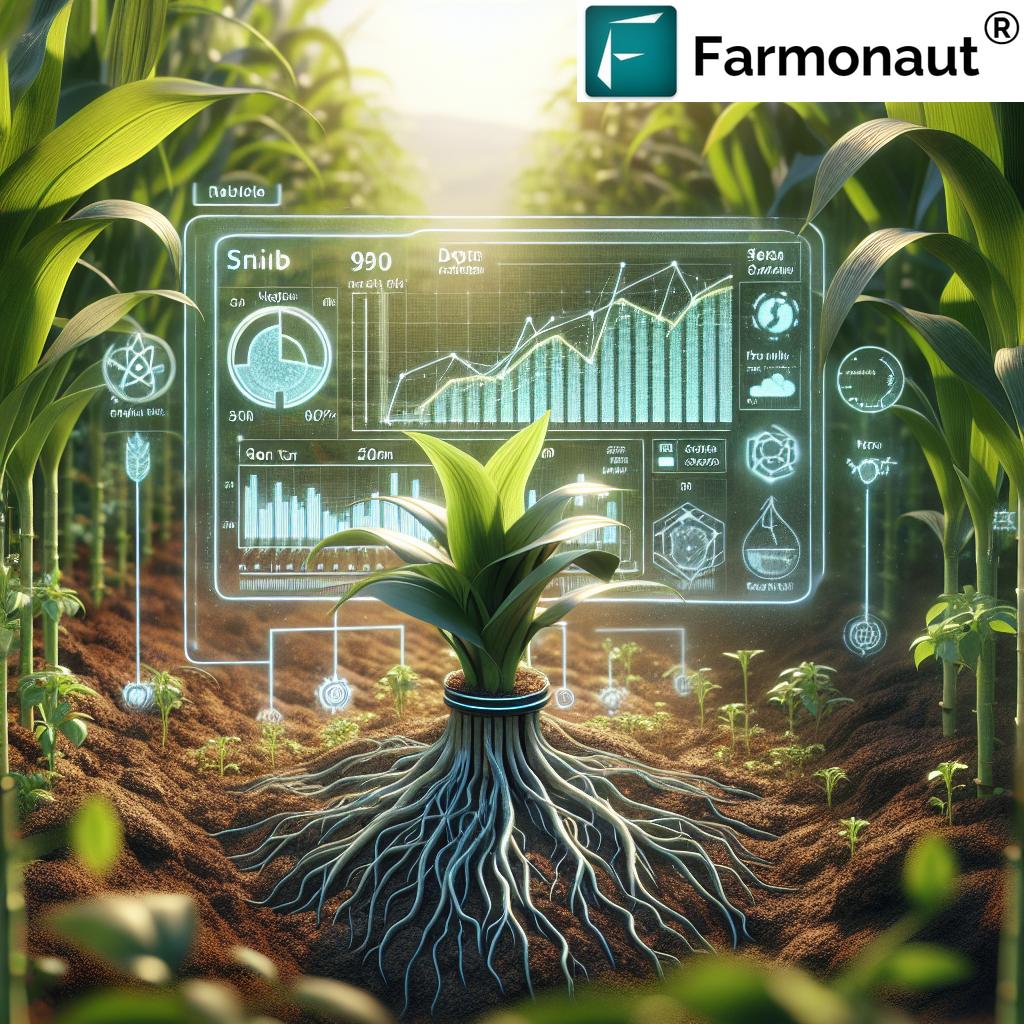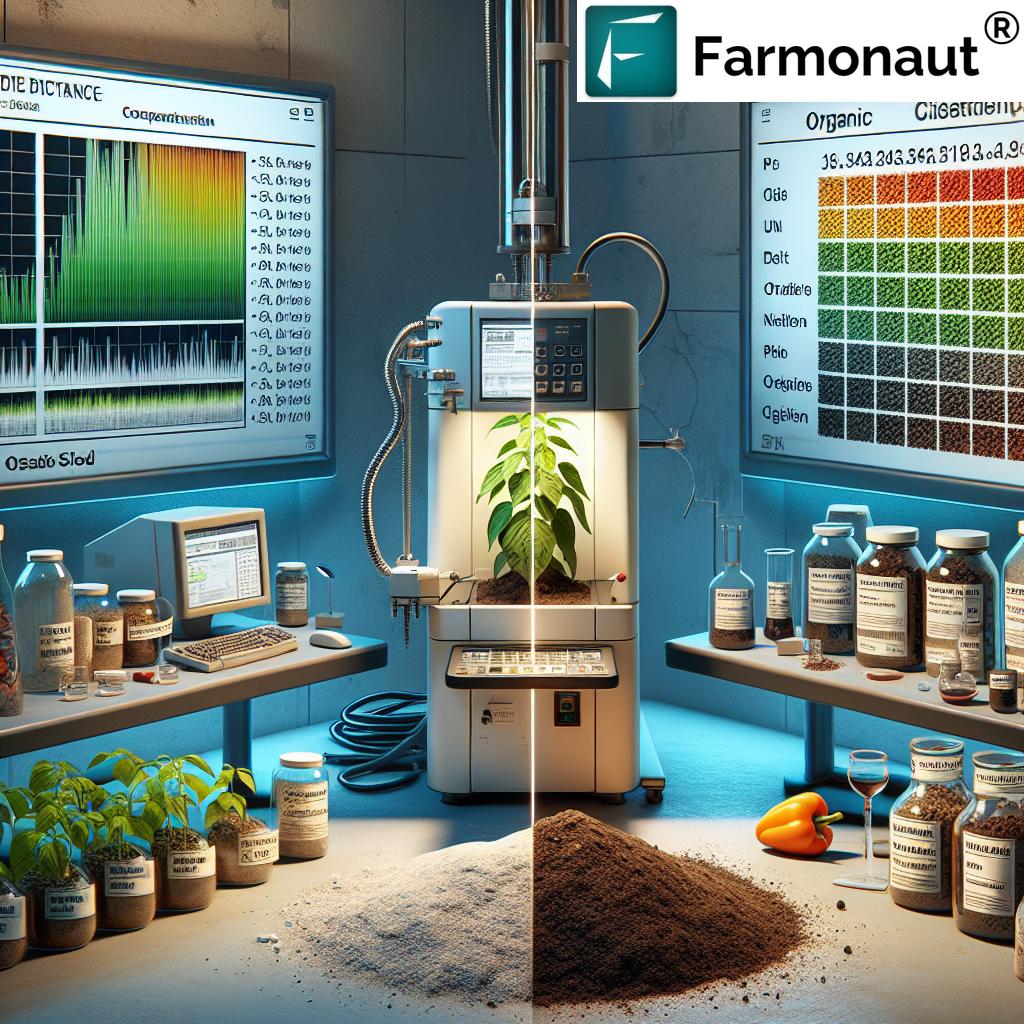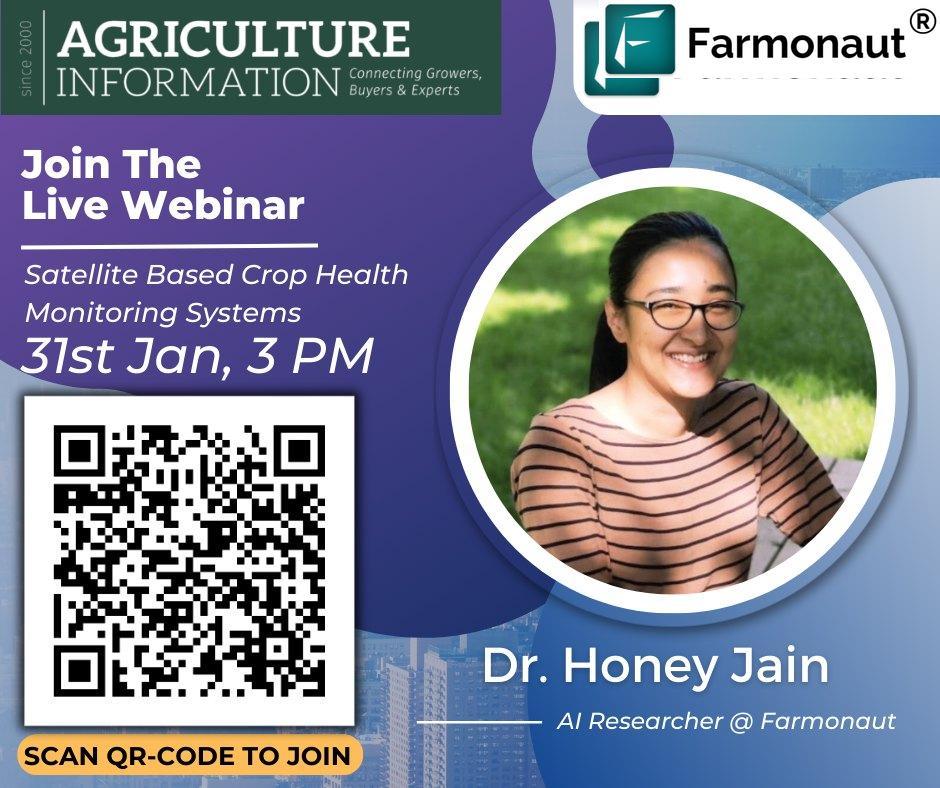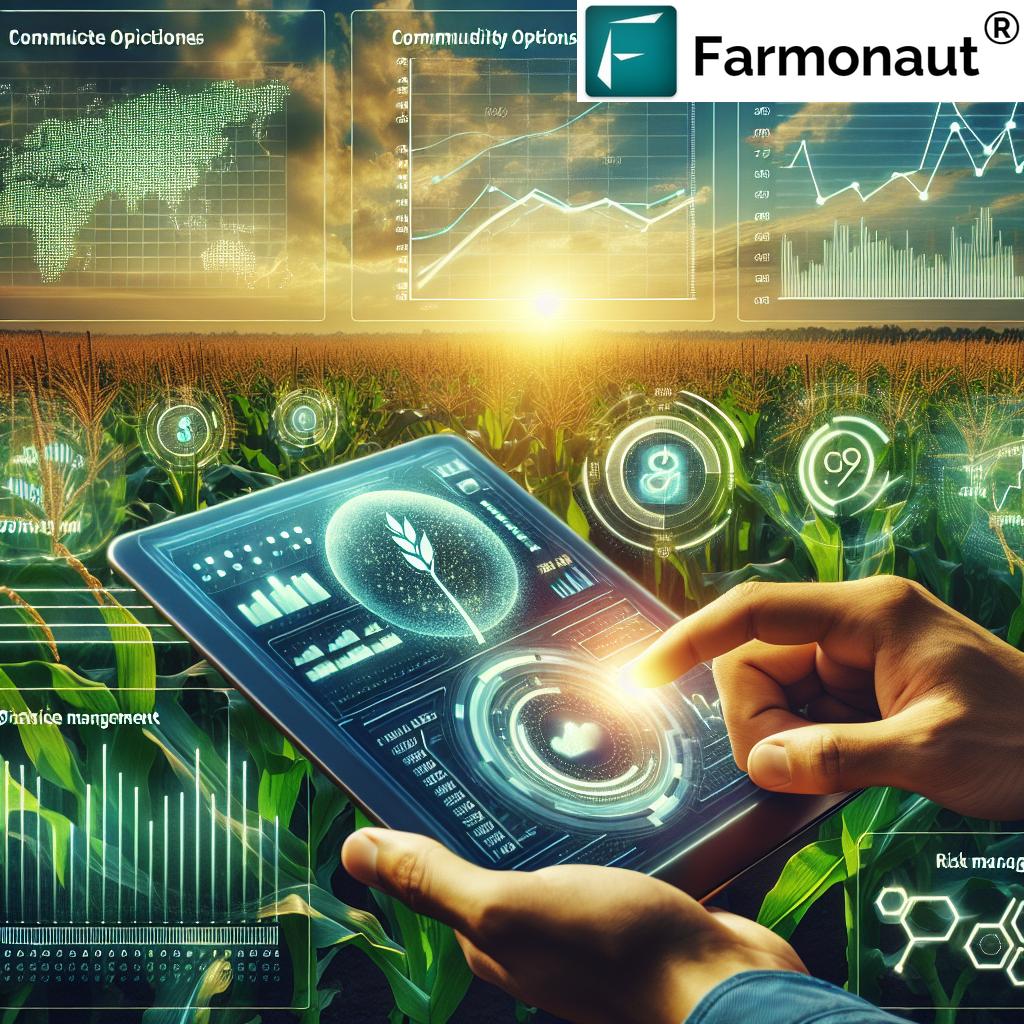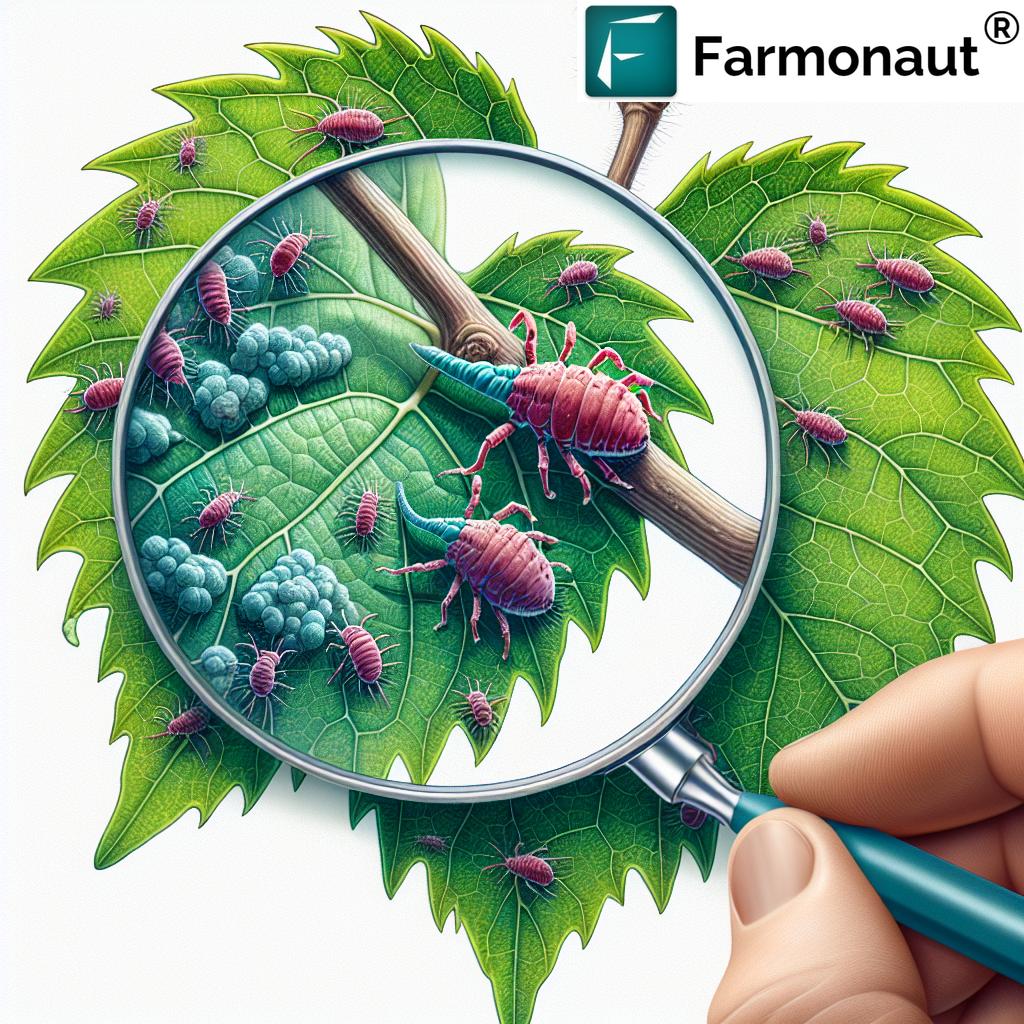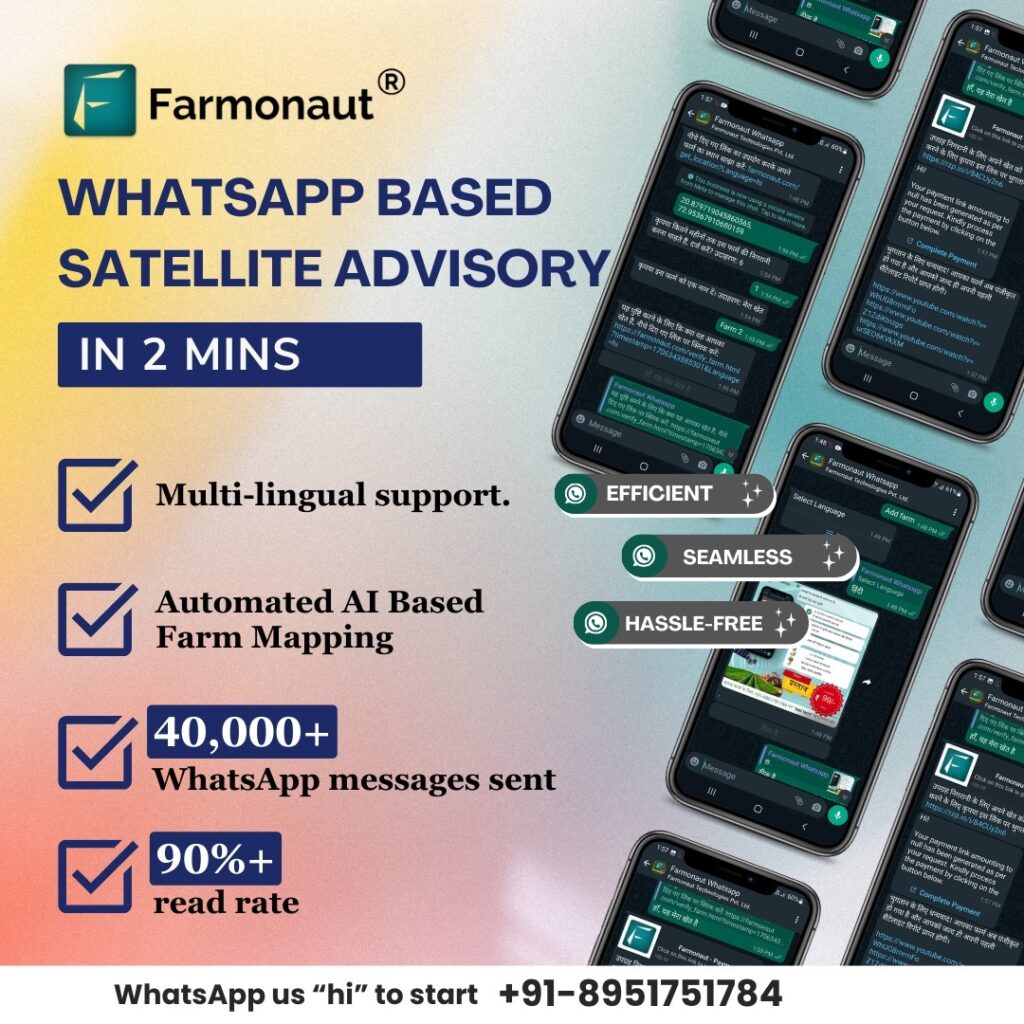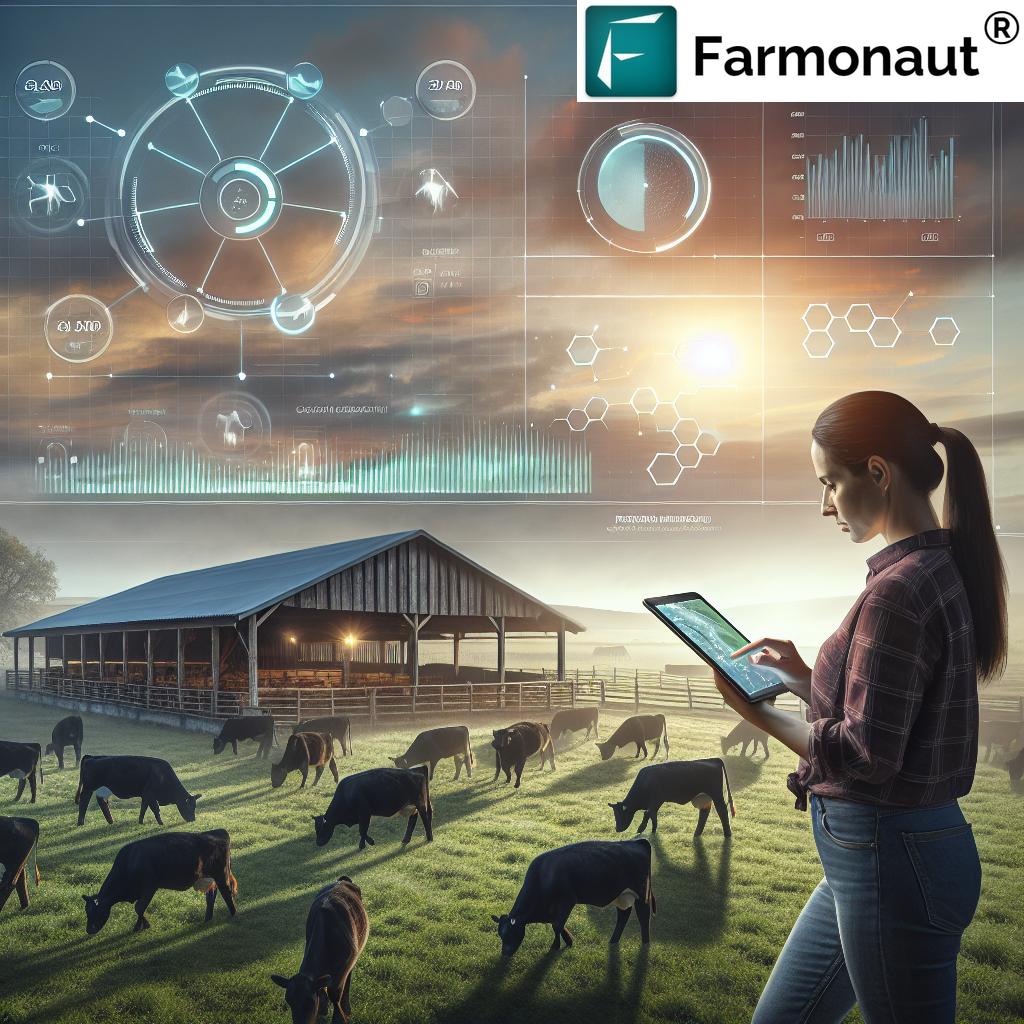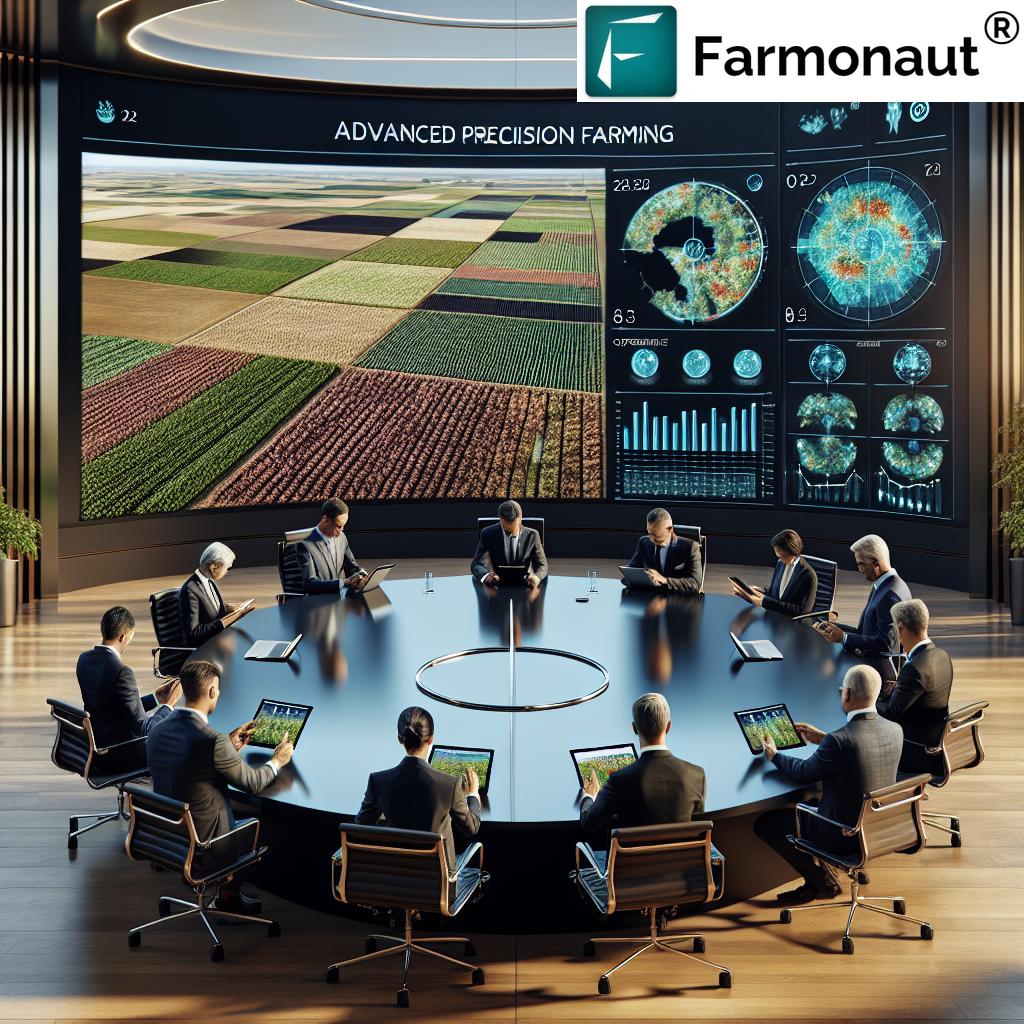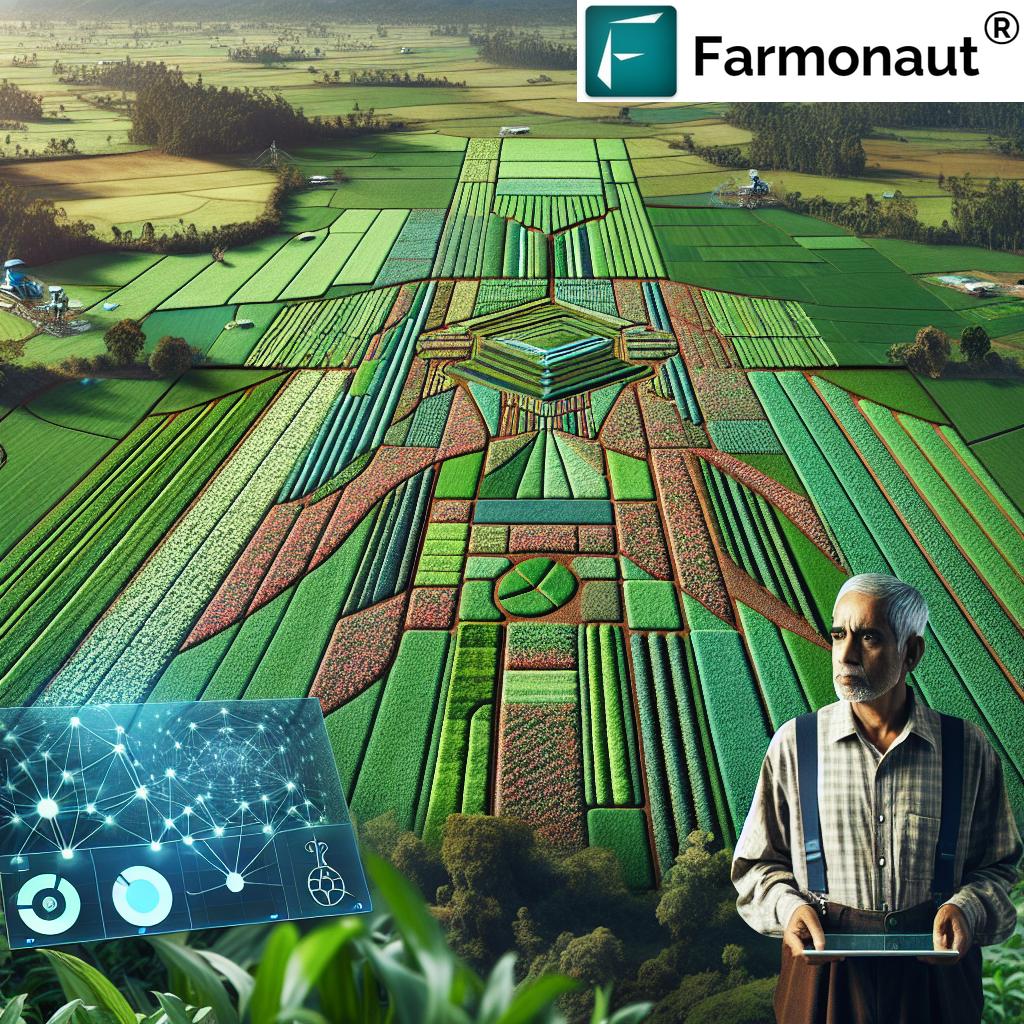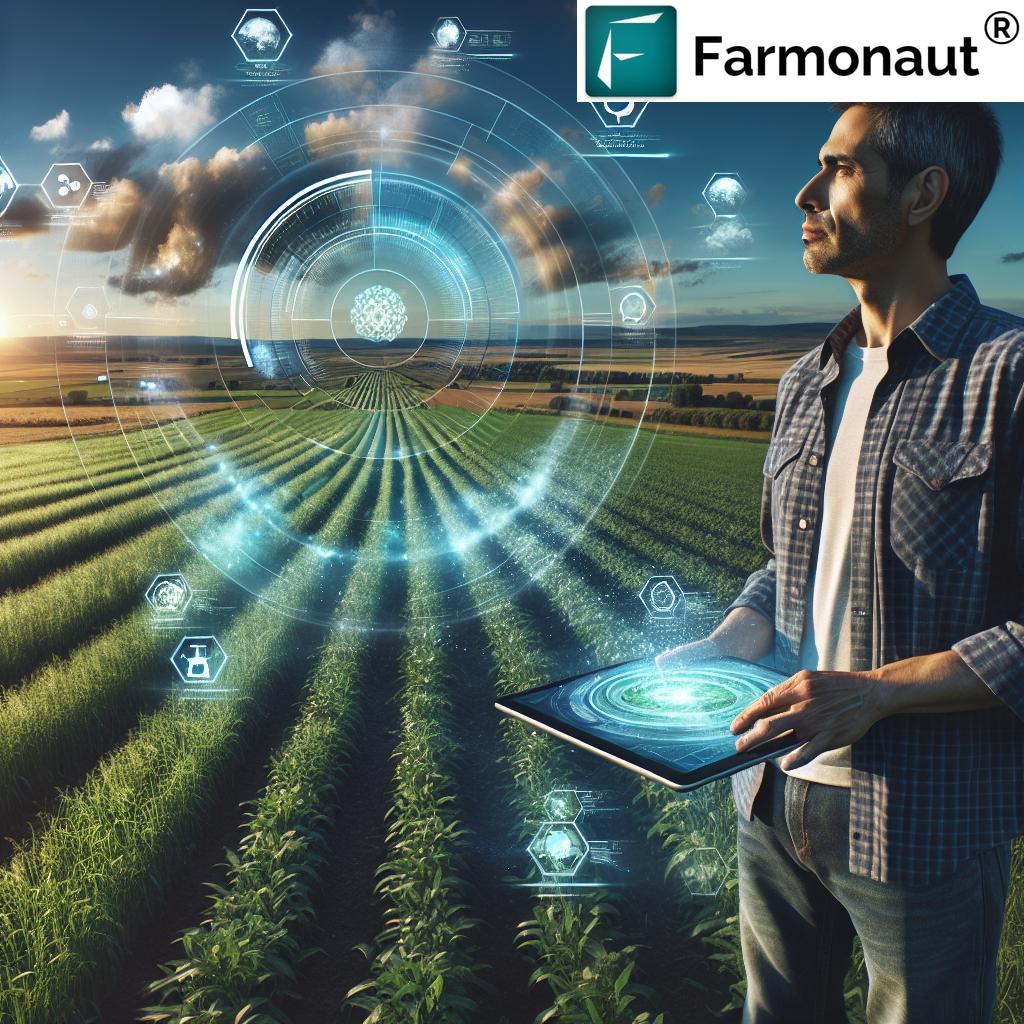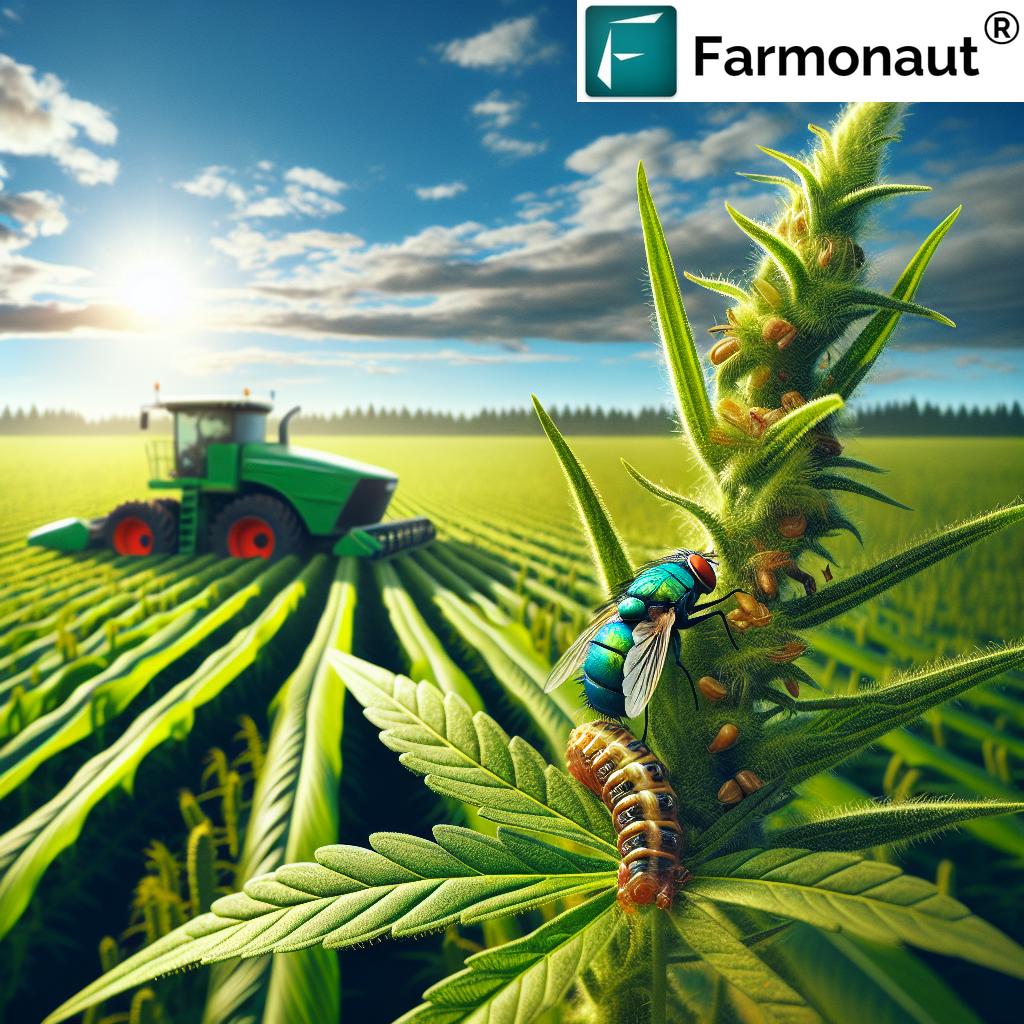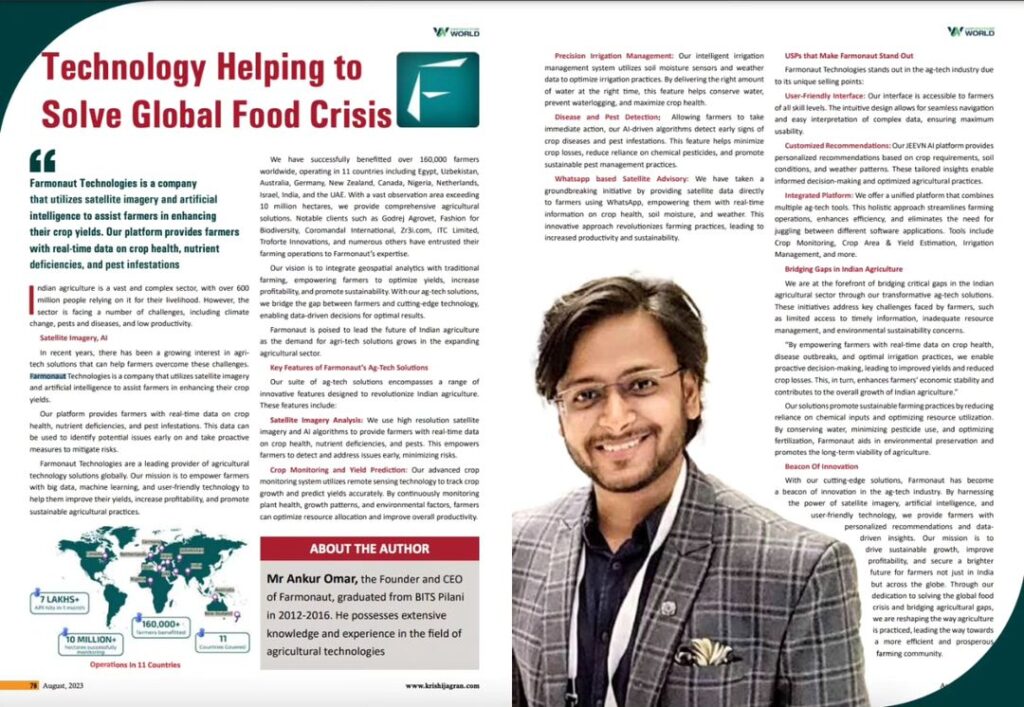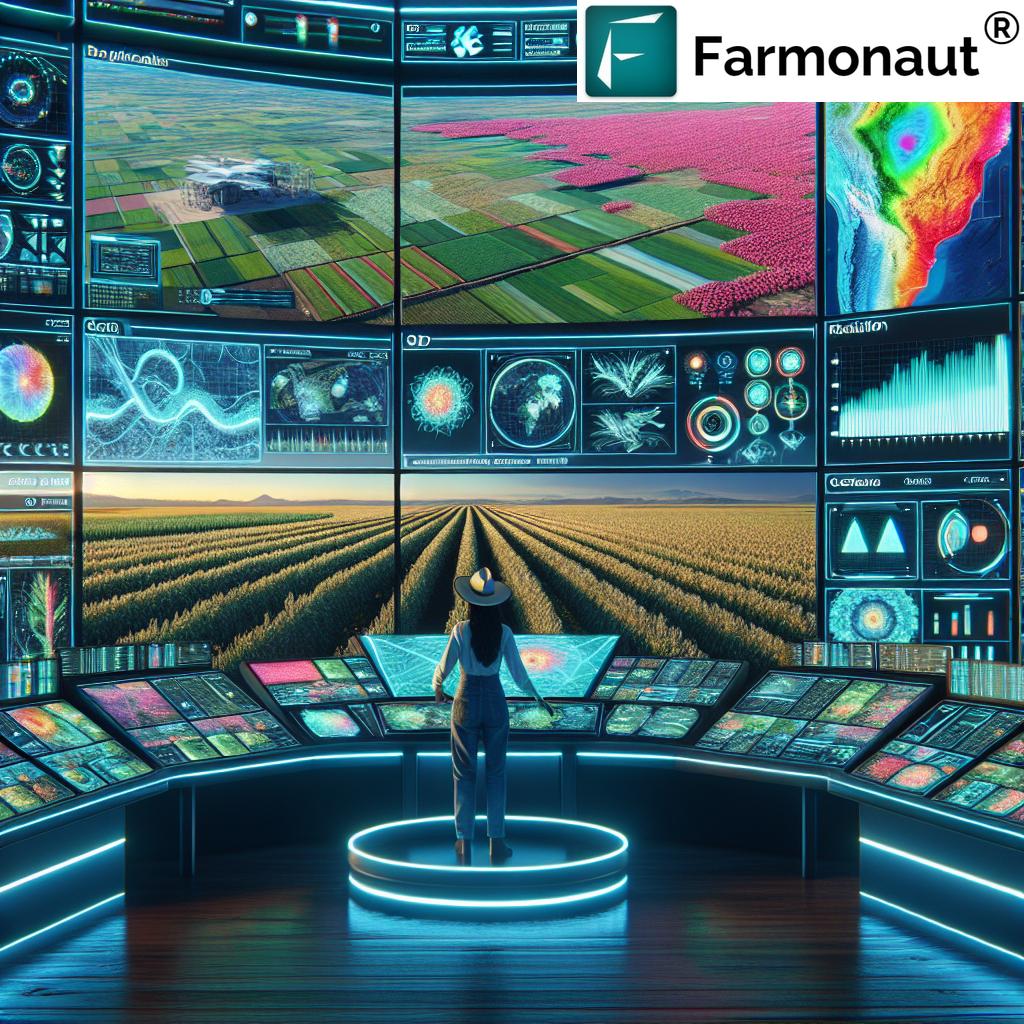Precision Agriculture Technology: 7 Game-Changers Unveiled
“Precision agriculture can increase crop yields by up to 20% using advanced data analytics and satellite imagery.”
Table of Contents
- Summary: Precision Agriculture’s Role in Modern Farming
- Introduction to Precision Agriculture
- Core Components of Precision Agriculture
- Applications of Precision Agriculture
- Comparison Table of Precision Agriculture Technologies
- Farmonaut: Making Precision Agriculture Accessible
- Economic and Environmental Benefits
- Challenges in Adopting Precision Agriculture
- Emerging Technologies & Trends
- FAQ: Precision Agriculture
- Conclusion
Summary: Precision Agriculture’s Role in Modern Farming
Precision agriculture, widely known as precision farming, is fundamentally shifting how we manage crops, forestry, and livestock. By leveraging advanced technologies such as GPS, data analytics, sensors, and satellite imagery, we are not only optimizing resource use but also promoting sustainable farming practices. Modern solutions enable us to monitor field variability, enhance crop health and yield, personalize input application, and minimize environmental impact. Importantly, Farmonaut is making these innovations accessible and cost-effective for growers globally, empowering everyone to benefit from the digital transformation in agriculture and rural management.
Introduction to Precision Agriculture
Today’s agricultural sector faces unprecedented challenges. With a growing global population, resource limitations, and environmental concerns, the demand for innovative crop management technologies has never been higher.
Precision agriculture emerges as a transformative approach, blending science and technology to solve problems on the farm, in the field, and throughout the supply chain. By integrating real-time data, advanced equipment, and actionable information, we can optimize every aspect of agricultural production— from monitoring soil health, managing pests, to maximizing yield and sustainability.
Let’s explore the seven foundational technologies that are reshaping how we grow food and manage land.
Core Components of Precision Agriculture
At the heart of precision agriculture technologies lies a network of tools and methodologies designed to collect, analyze, and apply meaningful information for smarter decisions. Let’s break down the seven technological game-changers driving the industry.
“Soil health monitoring technologies can reduce fertilizer use by 15%, promoting more sustainable farming practices.”
1. GPS & GIS for Field Precision
Global Positioning System (GPS) and Geographic Information System (GIS) are among the most critical components of modern precision agriculture. These systems work together to:
- Map fields with high spatial accuracy
- Monitor equipment locations and movements
- Apply inputs precisely across varying field areas
- Analyze spatial data to understand in-field variability
By placing GPS-enabled equipment in our fleet and integrating with GIS platforms, farmers can track and record every activity down to the square meter. These systems empower informed decision-making based on field variability, ultimately improving yield and minimizing waste.
If you’re managing vast plantations or multiple properties, robust large-scale farm management solutions are available, allowing for streamlined data, resource, and fleet management—all through intuitive, digital platforms.
2. Remote Sensing in Agriculture
Remote sensing, utilizing satellite and aerial imagery, offers real-time and historical data on crop health, soil moisture, and land conditions. This non-invasive technology is essential for:
- Early detection of problems like nutrient deficiencies or pest infestations
- Tracking plant health and growth stages
- Identifying issues before they escalate
- Supporting targeted interventions and resource application
For instance, satellite-based crop health monitoring uses multispectral data to assess vegetation vigor, canopy cover, and soil properties at high resolution. The data supports everything from irrigation decisions to disease risk forecasting.
3. Variable Rate Technology (VRT)
With Variable Rate Technology (VRT), we can apply fertilizers, pesticides, and water at varying rates across our fields—the definition of precision. VRT systems use prescription maps generated from GPS and remote sensing data, enabling:
- Tailored input application based on spatial variability
- Reduced input waste and optimized use of resources
- Lower environmental impact and improved crop quality
- Savings on operational costs
The ability to match input rates to specific soil and crop needs is a cornerstone of sustainable farming practices. Farmers can even integrate farm management APIs to automate these processes and receive timely alerts directly on their devices.
4. Yield Monitoring Systems
Yield monitoring systems are essential tools for understanding how our fields perform during harvest. By collecting detailed data on yield and crop quality across the field, we can:
- Assess variations in productivity within the same field
- Adjust future management strategies accordingly
- Optimize input application and seeding rates
- Improve long-term soil health and profitability
Yield data is often combined with other agricultural data analytics streams, such as soil sensors and remote sensing images, to create a holistic view of field performance.
5. Soil and Crop Health Sensors
Modern soil moisture sensors, weather stations, and on-field devices collect real-time data on important indicators such as:
- Soil moisture and nutrient levels
- Chemical imbalances and pH
- Crop health indicators (NDVI, LAI, etc.)
- Early detection of stresses, diseases, and deficiencies
Accurate sensor data empowers us to:
- Plan precise irrigation schedules
- Optimize fertilizer and water inputs
- Reduce environmental impact
- Monitor crop growth trends throughout the season
With connected IoT devices, the information syncs directly to our agricultural management apps, ensuring every decision is data-driven and timely.
6. UAVs & Drones Equipped for Precision
Unmanned Aerial Vehicles (UAVs), commonly known as drones, bring aerial precision to the next level. With multispectral cameras, lidar, and advanced sensors, these vehicles:
- Monitor crop health and field conditions in high definition
- Identify pest and disease outbreaks early
- Support variable application of inputs (spraying, seeding, etc.)
- Map and model forest resources in precision forestry
The adoption of UAVs unlocks efficiencies across agricultural and forestry management, ensuring issues are detected and resolved before they become costly problems.
Learn how advanced UAV technology integrates with precision crop and forest advisory solutions to maximize returns and sustainability.
7. AI, IoT, and Advanced Data Analytics
The modern farm is increasingly digital. Our ability to collect, process, and apply vast datasets means every action is informed, targeted, and optimized.
- Artificial Intelligence (AI) and machine learning are revolutionizing agricultural data analytics:
- Predicting outcomes (yield, disease outbreaks)
- Identifying patterns in soil and plant data
- Generating real-time recommendations
- Internet of Things (IoT) devices connect everything from soil sensors to weather stations, enabling:
- Live field monitoring from any location
- Seamless integration across hardware and apps
- Automated alerts for crucial thresholds (moisture, nutrients, disease risk)
- Blockchain enhances supply chain transparency and product traceability.
Explore blockchain-based traceability solutions and carbon footprint tracking on the Farmonaut platform, empowering growers and supply chain managers to meet compliance and consumer demands.
Applications of Precision Agriculture
In Crop Farming
Precision agriculture enables a variety of impactful applications across crop production:
- Site-Specific Crop Management (SSCM): Tailor interventions and input applications to specific field zones based on spatial variability.
- Precision Seeding: Strategically place seeds at optimal locations and depths, enhancing plant spacing and reducing input waste.
- Pest and Disease Management: Leverage crop health monitoring, remote sensing in agriculture, and field-based data for the early detection and targeted treatment of pests, disease outbreaks, and nutrient deficiencies.
- Intelligent Irrigation: Integrate smart farm management systems with soil moisture sensors for precise irrigation scheduling and water conservation.
In Precision Forestry
Adapting precision agriculture principles to forestry brings new possibilities for resource management. Some standout applications include:
-
LiDAR and Multispectral Remote Sensing:
Drones equipped with lidar and multispectral sensors provide 3D mapping of forests, supporting inventory and health assessments. -
Automated Harvesting Systems:
Use cut-to-length (CTL) forestry machinery for precision harvesting and waste reduction. -
Forest Health and Disease Surveillance:
UAVs assist in early pest and disease detection, crucial for protecting large, remote forest areas.
Organizations managing crop plantations, forests, and conservation zones can benefit from advanced satellite monitoring for strategic decisions and sustainability initiatives.
In Livestock Management
While the core focus is often on crops and forestry, precision agriculture tools also extend into livestock management:
- Health Monitoring: Track animal health, feeding, and movement patterns through sensors and real-time analytics.
- Facility Optimization: Automate climate, feeding, and breeding operations to maximize productivity and animal welfare.
- Resource Efficiency: Monitor water use and waste output to minimize environmental impacts and ensure sustainability.
Comparison Table of Precision Agriculture Technologies
| Technology Name | Core Function | Key Benefits | Estimated Yield Improvement (%) | Implementation Cost (USD/acre) | Environmental Impact |
|---|---|---|---|---|---|
| GPS & GIS Mapping | Positioning & mapping field variability | Spatial accuracy, resource allocation | 10 – 20% | 10 – 30 | Low |
| Remote Sensing (Satellite, Aerial) | Real-time imagery & monitoring | Early problem detection, broad coverage | 10 – 15% | 8 – 20 | Low |
| Variable Rate Technology (VRT) | Variable input application | Reduced input waste, higher yield quality | 12 – 18% | 25 – 55 | Low |
| Yield Monitoring Systems | Harvest data collection | Performance analytics, optimize management | 5 – 15% | 15 – 25 | Low |
| Soil & Crop Health Sensors | On-field sensing & diagnostics | Precision irrigation, input timing | 8 – 14% | 18 – 35 | Low to Medium |
| UAVs & Drones | Aerial surveying & hotspot detection | Detailed crop & forest management | 15 – 20% | 35 – 65 | Low |
| AI, IoT & Advanced Analytics | Data-driven insights, automation | Predictive management & process optimization | 12 – 25% | 15 – 40 | Low |
Farmonaut: Making Precision Agriculture Accessible
While precision agriculture once seemed out of reach for many farmers due to technical and cost barriers, companies like Farmonaut are democratizing access. Farmonaut’s mission is to make precision farming technologies affordable and accessible for all, offering satellite-based crop health monitoring, AI-driven advisories, and resource management through user-friendly platforms on Android, iOS, the web, and robust API integrations.
- Satellite Crop Health Monitoring: Receive timely insights on NDVI, soil moisture, vegetation health, and more—helping you optimize watering, input use, and pest management.
- Jeevn AI Advisory System: Harness real-time analytics for field-specific advice, weather forecasts, and action plans designed to improve productivity.
- Blockchain Traceability: Adopt end-to-end product traceability for compliance, food safety, and consumer trust via Farmonaut’s traceability features.
- Fleet & Resource Management: Monitor the locations of your machinery and vehicles efficiently, reducing operational cost and maximizing field time. Visit Fleet Management to discover the benefits.
- Carbon Footprinting: Monitor your environmental impact and meet sustainable farming goals with easy-to-use carbon footprint tools.
- Accessible Financing and Insurance: Easy verification through Crop Loan & Insurance solutions ensures quick, fraud-resistant access to capital for farm improvements.
Our subscription-based model is scalable—serving everyone from smallholders to agribusinesses and government agencies. If you’re a developer or organization seeking to embed satellite data and weather intelligence into your own system, check our developer documentation.
Economic and Environmental Benefits of Precision Agriculture
The real-world impact of precision agriculture is measured in cost reductions, yield improvements, and sustainability gains:
- Lower Input Expenditure: Targeted management minimizes fertilizer, pesticide, and water use, trimming costs and reducing risk of overuse.
- Productivity Boost: As we collect, analyze, and act on in-field data, overall yields and quality rise—translating into higher farm profits.
- Environmental Sustainability: Efficient resource use aligns with climate and regulatory goals, reduces pollution, and promotes biodiversity.
- Supply Chain Transparency: With traceability and carbon footprinting, our products earn greater credibility and trust in global markets.
- Risk Mitigation: Early detection of disease, pests, and climate stress means fewer surprises and stronger resilience against disasters.
By integrating cutting-edge technologies into our everyday operations, we’re not only adapting to change—we’re shaping the future of agriculture.
Challenges in Adopting Precision Agriculture
Though the benefits are significant, some barriers must be addressed for widespread adoption:
- High Initial Investment: Advanced equipment and systems can have upfront costs that are challenging for smallholder farmers.
- Technical Expertise: Proper use requires experience with devices, data interpretation, and integration into traditional workflows.
- Data Management Complexity: Handling and analyzing large datasets necessitates sophisticated platforms and training.
- Infrastructure Limitations: Reliable internet, electricity, and device support are essential, yet may be lacking in remote or rural areas.
We believe that with supportive digital tools and flexible subscription models, such as those offered by Farmonaut, these challenges can be minimized. Expanding education, training, and access will further break down barriers.
Emerging Technologies & Trends in Precision Agriculture
The landscape of precision agriculture continues to evolve rapidly, with several emerging trends driving the industry forward:
- Smart Sensors and Nanotechnology: The rise of ultra-precise sensors and nanosensors will elevate in-field monitoring to the molecular level, enabling finer control over nutrients, water, and disease management.
- Artificial Intelligence for Predictive Analytics: AI is moving from reactive to predictive, automating complex decisions—such as forecasting disease outbreaks and optimizing entire crop cycles.
- Integration of IoT and Mobile Apps: Seamless connectivity between sensors, drones, remote data platforms, and farm machinery is making agriculture data-driven and user-friendly. The integration of mobile and cloud-based platforms, like those from Farmonaut, will continue to drive accessibility.
- Blockchain Expansion: As blockchain matures, greater transparency, traceability, and secure transactions throughout the supply chain will become the industry standard.
- Focus on Sustainability and Carbon Monitoring: Farmers and producers are under increasing pressure to reduce carbon emissions. Data-backed carbon footprint tracking now enables practical, quantifiable reductions in environmental impact.
Stay updated by leveraging industry news and by integrating cutting-edge solutions into your routine workflow.
FAQ: Precision Agriculture
What is precision agriculture?
Precision agriculture is a data-driven approach to farming that uses advanced technologies such as GPS, remote sensing, IoT sensors, and big data analytics to optimize the management of crops, soil, water, and other resources. The goal is to enhance productivity, sustainability, and profitability while reducing environmental impact.
What types of data do precision agriculture systems collect?
They collect spatial data (e.g., field maps, crop zones), soil and moisture levels, weather data, equipment location and usage patterns, imagery from satellites and drones, pest and disease risks, and yield metrics. This data informs targeted input application and real-time farm management decisions.
How does variable rate technology benefit farmers?
Variable rate technology (VRT) enables farmers to apply fertilizers, pesticides, seeds, and water at specific rates tailored to the needs of different field zones. This reduces input wastage, saves money, improves yields, and lessens environmental impact by avoiding over- or under-application.
Is precision farming only for large-scale operations?
No. Modern providers, like Farmonaut, offer flexible, affordable solutions adapted to small, medium, and large-scale farmers. Even a few hectares can benefit from satellite monitoring, efficient resource use, and automated advisories.
How can precision agriculture support sustainable farming practices?
By optimizing input use, enabling early detection of crop issues, and tracking carbon footprints, precision agriculture limits environmental harm, conserves resources, and fosters long-term soil and ecosystem health.
What if I have unreliable internet on my farm?
While many systems work best with reliable internet, several tools (including some mobile or satellite-based solutions) function offline and sync data when connectivity is restored. Providers are continually improving accessibility for rural users.
Conclusion
Precision agriculture represents the fusion of technology and tradition. Through focused management, targeted input application, and powerful data analytics, it’s possible to enhance crop yield, improve soil health, and achieve sustainability even in the face of climate and resource pressures. While challenges remain, companies like Farmonaut are making digital transformation affordable and accessible, empowering us all to plan, monitor, and thrive at every level—from the smallest field to the largest management system.
To take the next step in optimizing your farm, forest, or agricultural business, explore Farmonaut’s full suite of satellite, AI, and blockchain-powered solutions—and join us on the frontier of smart, sustainable agriculture.


